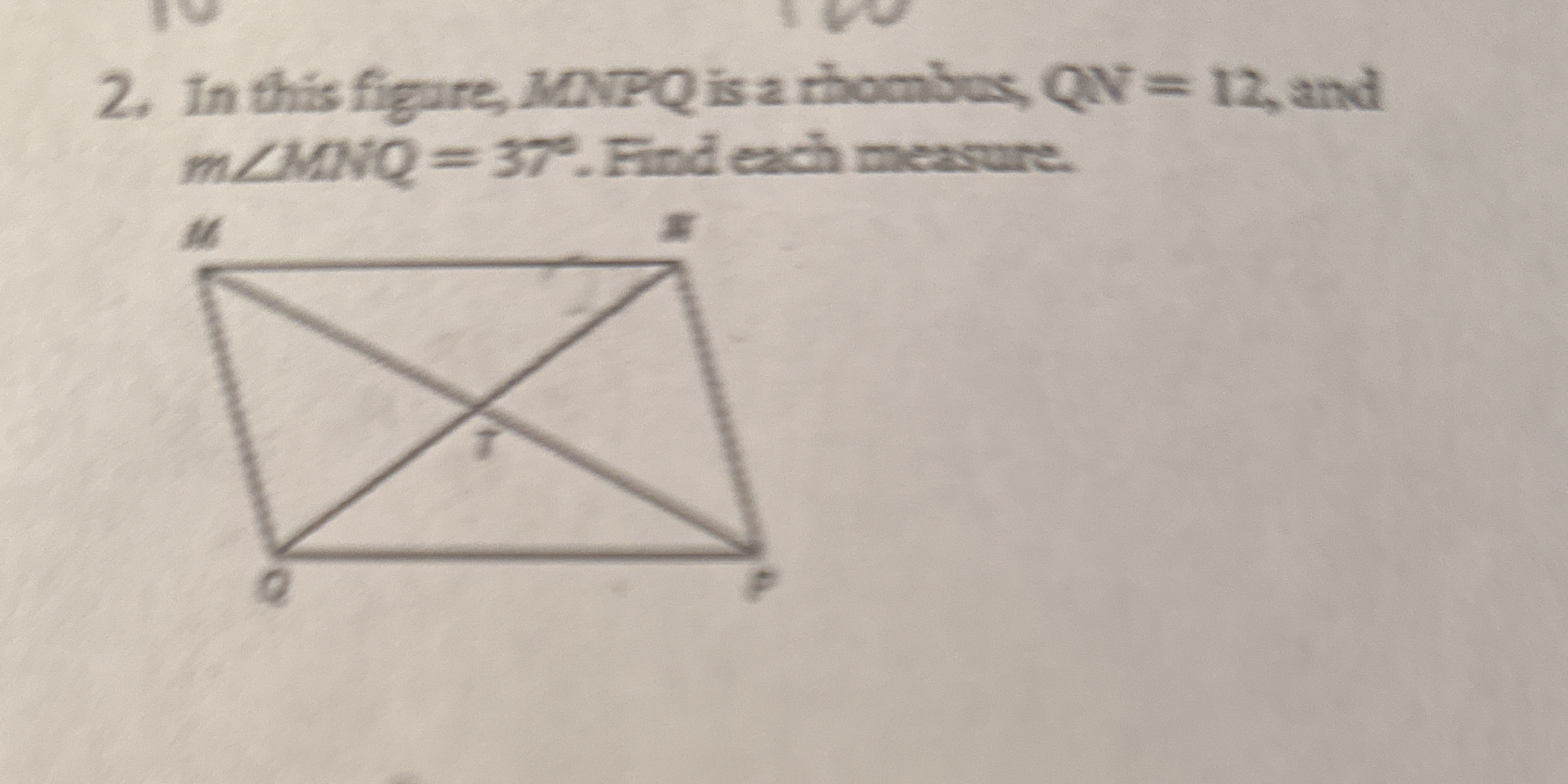In this figure, MNQP is a rhombus, QN = 12, and m∠MNQ = 37°. Find each measure.

Understand the Problem
The question is asking to find the measures of specific angles and possibly sides in a rhombus given the length of one side and the measure of one angle. It will involve the properties of rhombuses and potentially angle relationships.
Answer
The measures of the angles are $m∠MNQ = 37°$, $m∠QPQ = 37°$, $m∠MQP = 143°$, $m∠PQM = 143°$.
Answer for screen readers
The measures of the angles in the rhombus are:
- $m∠MNQ = 37°$
- $m∠QPQ = 37°$
- $m∠MQP = 143°$
- $m∠PQM = 143°$
Steps to Solve
-
Understanding properties of a rhombus In a rhombus, all sides are of equal length and opposite angles are equal. The diagonals bisect each other at right angles.
-
Identifying the known values We know that the length of side $QN = 12$ and the measure of angle $m∠MNQ = 37°$. Since $MNQP$ is a rhombus, all sides $MN$, $QP$, and $MQ$ are also equal to $12$.
-
Finding the remaining angles Since opposite angles are equal in a rhombus, we have:
- $m∠QPQ = 37°$ Therefore, the adjacent angles are supplementary: $$ m∠MQP + m∠MNQ = 180° $$ Thus, $$ m∠MQP = 180° - 37° = 143° $$
-
Finding the other angles Similarly, since the opposite angle to $m∠MQP$ is: $$ m∠PQM = 143° $$
-
Summary of angles The measures of the angles in the rhombus are:
- $m∠MNQ = 37°$
- $m∠QPQ = 37°$
- $m∠MQP = 143°$
- $m∠PQM = 143°$
-
Finding the lengths of diagonals Since the diagonals bisect at right angles, we can apply the Pythagorean theorem to find the diagonal lengths. Let's denote the diagonals as $d_1$ and $d_2$. Each diagonal can be calculated using: $$ \left(\frac{d_1}{2}\right)^2 + \left(\frac{d_2}{2}\right)^2 = 12^2 $$
The measures of the angles in the rhombus are:
- $m∠MNQ = 37°$
- $m∠QPQ = 37°$
- $m∠MQP = 143°$
- $m∠PQM = 143°$
More Information
In any rhombus, the angles are related such that adjacent angles are supplementary and opposite angles are equal. The diagonals bisect the angles and each other, creating two congruent triangles within the rhombus.
Tips
Null
AI-generated content may contain errors. Please verify critical information